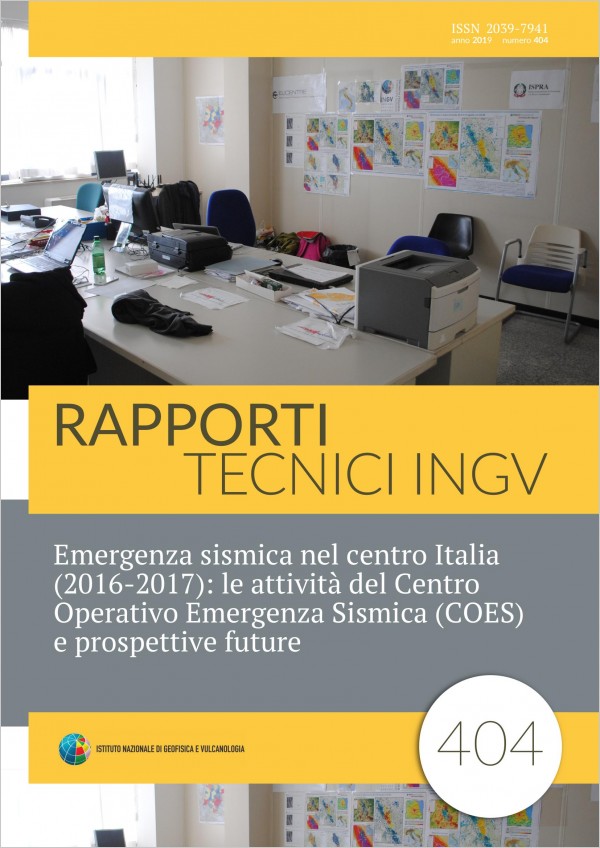Emergenza sismica nel centro Italia (2016-2017): le attività del Centro Operativo Emergenza Sismica (COES) e prospettive future
Main Article Content
Abstract
On August 24, 2016, a magnitude 6.0 earthquake, located between the towns of Amatrice, Pescara del Tronto, Arquata del Tronto and Accumoli, struck Central Italy, starting a long and complicated seismic sequence [GdL INGV sul terremoto di Amatrice, 2016]. Following the agreement signed by the Istituto Nazionale di Geofisica e Vulcanologia (INGV) and the Department of Civil Protection (in Italian Dipartimento di Protezione Civile - DPC from here on), and the actions defined in the draft protocol that the INGV is codifying to manage seismic emergencies, the Crisis Unit and the Emergency Operating teams SISMIKO, QUEST, EMERGEO, EMERSITO and IES have been immediately activated [Pondrelli et al., 2016]. The seriousness of the consequences of the event was immediately clear. A few hours after the beginning of the emergency, the Head of the DPC ordered the opening of the DPC Command and Control Direction (Di.Coma.C. from here on), that is the national coordination center for the Components of operational structures for Civil Protection in the area affected by the earthquake. The Di.Coma.C. was set up and activated in the morning of Sunday 28 of August in Rieti [Annex 1]. Also INGV was involved in this organization. On August 28, the Seismic Emergency Operations Center (in Italian: Centro Operativo Emergenza Sismica – COES from here on [Moretti et al., 2010a; Moretti et al., 2011; Moretti and Pondrelli, 2013]) was installed and immediately operational as the INGV outpost in the epicentral area. The COES was active at Di.Coma.C. until its closure, in April 7, 2017. In 8 months, 55 staff units from all the INGV offices took duty. The implemented organization showed a good efficiency, especially when a series of important new events, in October 26th and October 30th 2016, and in January 18th 2017, put the whole emergency system again under stress. In this report we describe the activities carried out by the COES, the pop-up problems, the adopted solutions, the positive results we obtained, with the aim to discuss a project aimed at improving this important part of the INGV management structure of a seismic emergency.
Article Details
Section
Article

This work is licensed under a Creative Commons Attribution 4.0 International License.

